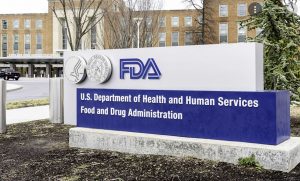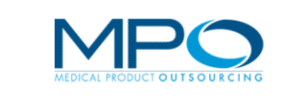Published Articles
Medical device regulatory laws continue to evolve not only with European Union changes to the Medical Device Regulation, but also with global harmonization efforts across the U.S. Food and Drug Administration (FDA). One of the more critical facets of global regulatory compliance involves FDA consensus standards and the conformity assessment procedure.
In general, the conformity assessment procedure is widely considered the validation of patient safety and medical device performance requirements. A primary goal of FDA new device approvals is to help ensure patients have access to reliable, high-quality products that increase efficacy.
What is FDA S-CAP?
According to the FDA’s webpage, the Standards and Conformity Assessment Program (S-CAP), promotes efficiencies and quality during the medical device regulatory review process by:

- Producing and implementing clear policies to promote the appropriate use of standards in regulatory processes
- Anticipating the need for and leading the development of national and international consensus standards
- Advancing initiatives to enhance confidence in conformity assessment activities
- Fostering innovation and standardization in technologies that facilitate patient access to novel medical devices
- Providing leadership in standards quality and utilization through outreach and global harmonization
Further, to fully understand the positive impact of S-CAP on the life sciences industry, this article will begin by reviewing four critical facets involved in the FDA certified process: understanding FDA standards, the criteria for regulatory submission, defining a consensus standard, and medical device lab testing.
Understanding FDA Standards
The FDA Standards Recognition Program assesses the applicability of a standard’s safety and performance during a medical device’s regulatory review. Determining applicability often includes input provided from both technical and clinical experts within the FDA’s Center for Devices and Radiological Health (CDRH).
Standards Recognition Plan
A primary goal of the Standards Recognition Program is for FDA experts to collaborate as a team while evaluating existing standards. This helps S-CAP leaders make judgements to either formally or partially recognize a standard that can potentially become a widely accepted consensus standard. Further, this could play a role in FDA labeling as well.
Conformity Declaration
Additionally, medical device manufacturers may also submit their own conformity declarations based on FDA-recognized consensus standards. For a premarket submission, using existing consensus standards already approved by the FDA can potentially help medtech manufacturers reduce the amount of supporting clinical data required for FDA marketing approval & fda approval process.
Criteria for Regulatory Submissions
The FDA’s Standards and Conformity Assessment Program also leverages pre-identified criteria designed to identify both vendors and manufacturers that voluntarily use FDA-recognized consensus principles. These standards, developed by FDA’s CDRH, can be a potential competitive advantage for FDA medical device manufacturers.
Clinical Testing
Companies that use approved S-CAP vendors during new product development can potentially have their clinical testing burden reduced. Currently, this program is still gaining traction across the life science industry. The FDA approved list number of FDA clinical trials approved vendors is slowly increasing.
Defining a Consensus Standard
The process of defining a consensus standard is not easy. They are often established (or accepted) by Standards Development Organizations (SDOs) that help distinguish what actual adherence means. Global adherence and acceptance are often based on the various attributes and reputation principles of the FDA consensus standards development organization, including:
- Transparency
- Openness to participation
- Industry stakeholders
- Balance of representation
- Due process
Domestically, consensus standards also help promote awareness across the life science industry to the FDA’s opinion about regulatory quality.
Medical Device Lab Testing
The majority of medical devices must go through a series of laboratory testing before being submitted for FDA approval. Some devices are evaluated for biological and chemical safety, while others may be assessed for mechanical properties, functionality, and durability. Other more complex, high-risk devices and combination devices are often submitted for multiple types of lab testing during premarket approval submissions.
Regulatory Submission
This clinical submission data from lab testing is included in the regulatory submission package proposed for FDA marketing approval. Many times, a medical device’s testing strategy depends on the medical device consultant with which a company is working, and the regulatory pathway recommended based on a pre-existing predicate device.
Lab Testing Facilities
Additionally, the program benefit is also realized by FDA employees when regulatory submission data comes from a pre-approved, ASCA-accredited testing lab. This often lessens the burden of streamlining the conformity assessment elements of medical device review. For example, instead of sifting through hundreds of pages of testing data from a non-approved ASCA vendor, FDA employees can leverage specific checklists that streamline data based on internationally approved standards from trusted ASCA approved lab testing facilities.
Accelerating the Submission Process
By completing clinical lab testing with a vendor that has been certified based on the FDA Accreditation Scheme for Conformity Assessment (ASCA), medical device manufacturers can often reduce the review time needed for regulatory submission approval. This can be an asset to manufacturers when it comes to shortening commercialization plans and bringing devices to market faster.
Understanding the ASCA Pilot
This voluntary ASCA Pilot from FDA is an accreditation system that benefits from the role that global standards already play in using regulatory science designed for submitting new products for approval. As listed on FDA’s website, the ASCA Pilot goals are to:
- Streamline conformity assessment in medical device submissions
- Enhance the FDA’s confidence in test methods and results
- Decrease the need for additional information related to conformance with a standard
- Promote consistency, predictability, and efficiency in medical device review
- Serve as a least burdensome approach to conformity assessment
Conclusion
 The FDA is continuously searching for new and innovative ways to bring safe, effective medical devices to market. FDA consensus standards, S-CAP, and the Conformity Assessment Pilot are just three examples of the ways in which manufacturers can partner with the FDA to provide necessary data via clear, concise mediums using the agency’s pre-approved clinical vendors. More information about lab testing vendors that are currently approved can be found on the FDA’s website or by contacting us directly through the blue form below.
The FDA is continuously searching for new and innovative ways to bring safe, effective medical devices to market. FDA consensus standards, S-CAP, and the Conformity Assessment Pilot are just three examples of the ways in which manufacturers can partner with the FDA to provide necessary data via clear, concise mediums using the agency’s pre-approved clinical vendors. More information about lab testing vendors that are currently approved can be found on the FDA’s website or by contacting us directly through the blue form below.
Rod Mell is executive head, Medical Device Consulting, at Regulatory Compliance Associates (RCA). RCA provides regulatory compliance consulting services for resolution of life science challenges. The company understands the complexities of running a life sciences business and possesses areas of expertise that include every facet of R&D, operations, regulatory affairs, quality, and manufacturing. More information is available at www.rcainc.com.
About the Publisher

To begin the Regulatory Compliance Associates scoping process today, please enter your information in the blue form below and click the submit button at the bottom of the webpage. You may also email us at [email protected].
Connect with RCA Today
Contact us to learn more about our regulatory compliance experts and how they can help



















